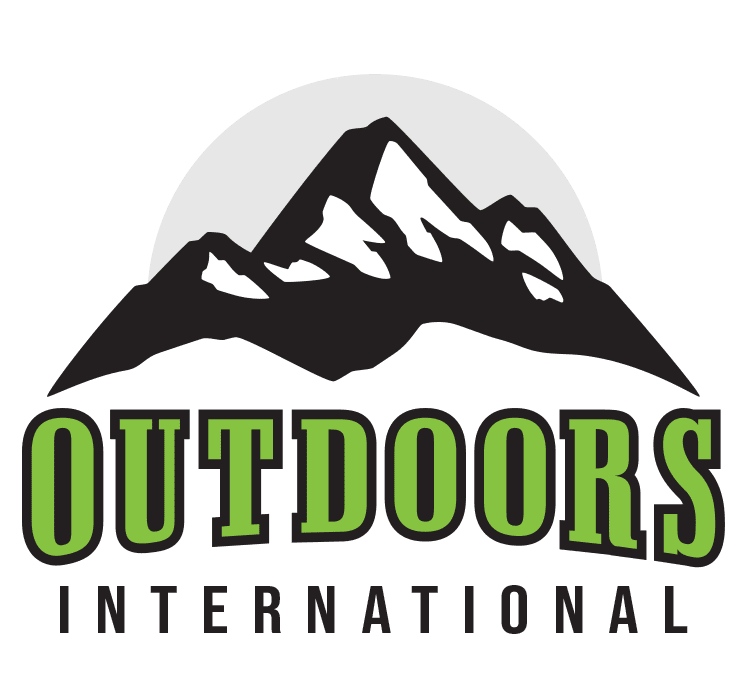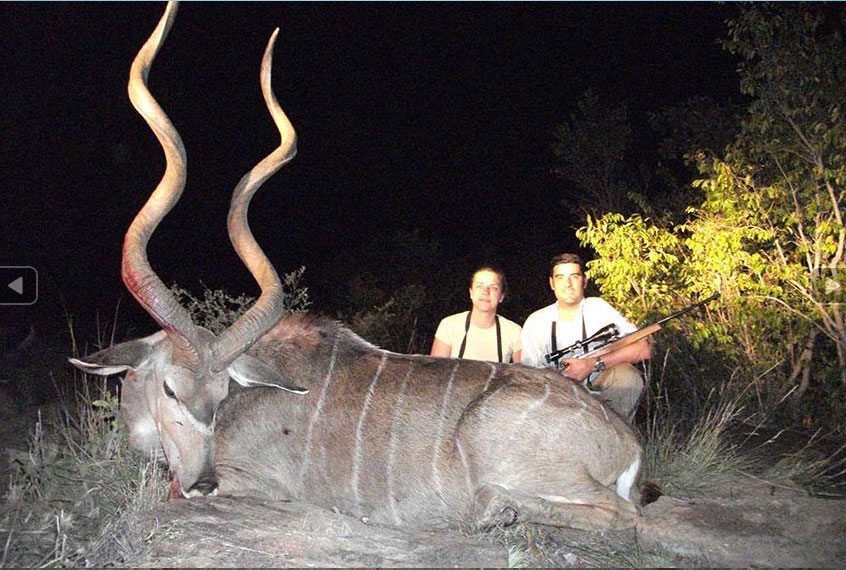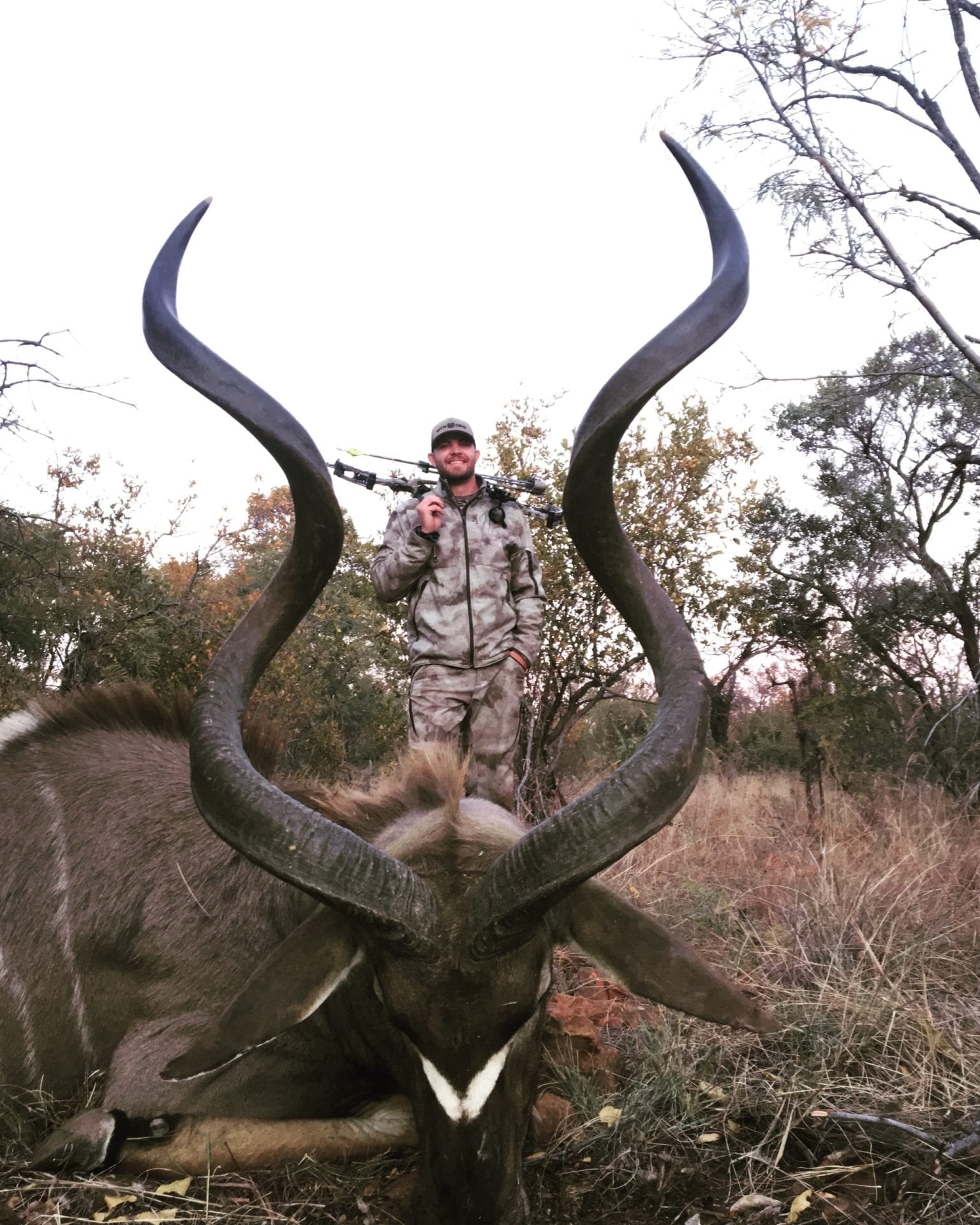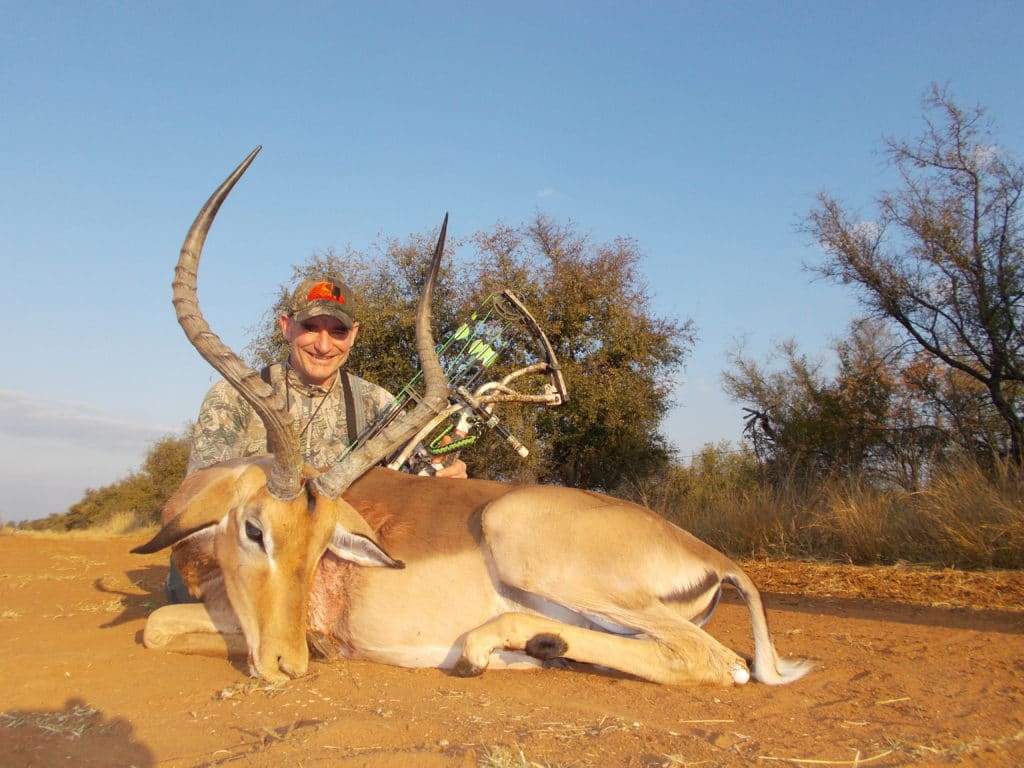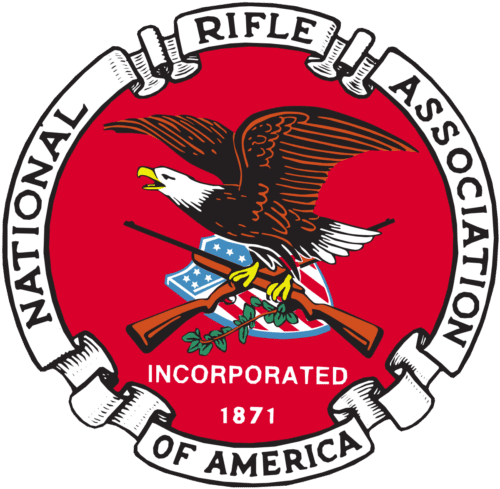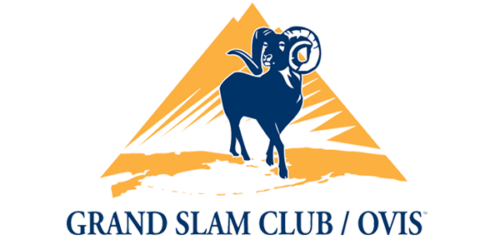The spiral horned antelope of the African continent fall under what is known as ‘the bushbuck tribe’, or tragelaphini. These antelopes differ from all other African antelopes in having a non-territorial social or mating system and, of course, are distinguished by the spiral shape of their horns. These species have an extensive geographical distribution across Africa, and their habitat preferences vary based on the species. The Spiral Horned Antelope are herbivores and have unique adaptations in their digestive system to efficiently process tough plant material.
Spiral Horned Antelope of Africa:
- Bushbuck
- Sitatunga
- Nyala
- Mountain Nyala
- Lesser Kudu
- Greater Kudu
- Bongo
- Common Eland
- Lord Derby or Giant Eland
Spiral Horned Antelope are essential to the culture and economy of many African countries. These beautiful African antelope species are revered in African mythology, and their horns and hides are used in traditional medicine. Spiral Horned Antelope also play a crucial role in tourism, with hunters contributing to their continued conservation and generating revenue for the local communities.
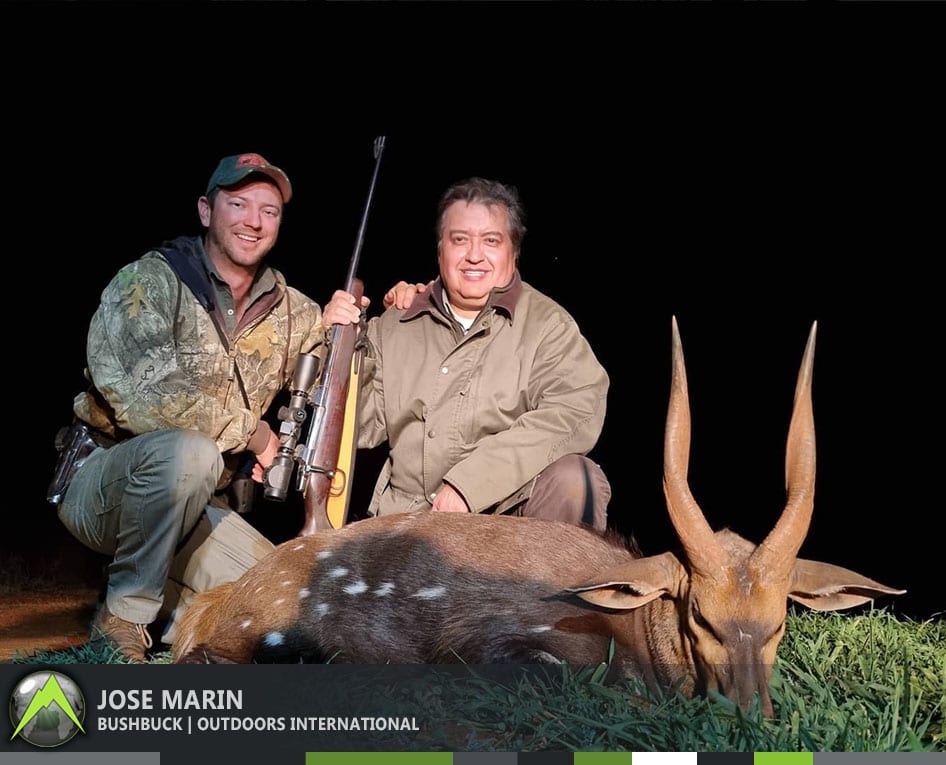
Bushbuck
Bushbuck hunting is an exhilarating experience that requires a lot of skill and patience. The bushbuck is a master of camouflage and can blend in with its surroundings, making it difficult to spot. Hunters need to be stealthy and have a keen eye to even catch a glimpse of this elusive animal.

Sitatunga
Sitatunga hunting is a unique hunting experience that takes place in the African wetlands. This elusive antelope is known for its incredible swimming and hiding abilities, making it a challenging game to hunt. Sitatunga hunting requires specific techniques and equipment, as well as knowledge of the animal’s behavior and habitat.
Sitatungas are shy and elusive animals that are well adapted to their wetland habitats. They are excellent swimmers and can hold their breath for up to 30 seconds, allowing them to move silently underwater to avoid predators. Sitatungas are also skilled at hiding, using their thick fur and long legs to blend in with their surroundings. These animals are most active at dawn and dusk and are known to be solitary or live in small groups of up to three individuals.
The best time to hunt sitatunga is during the dry season when the water levels in wetlands are lower, and the animals are more concentrated in specific areas. This typically falls between May and September, depending on the location. Contact us today to plan your hunt during the optimal time to increase your chances of success.
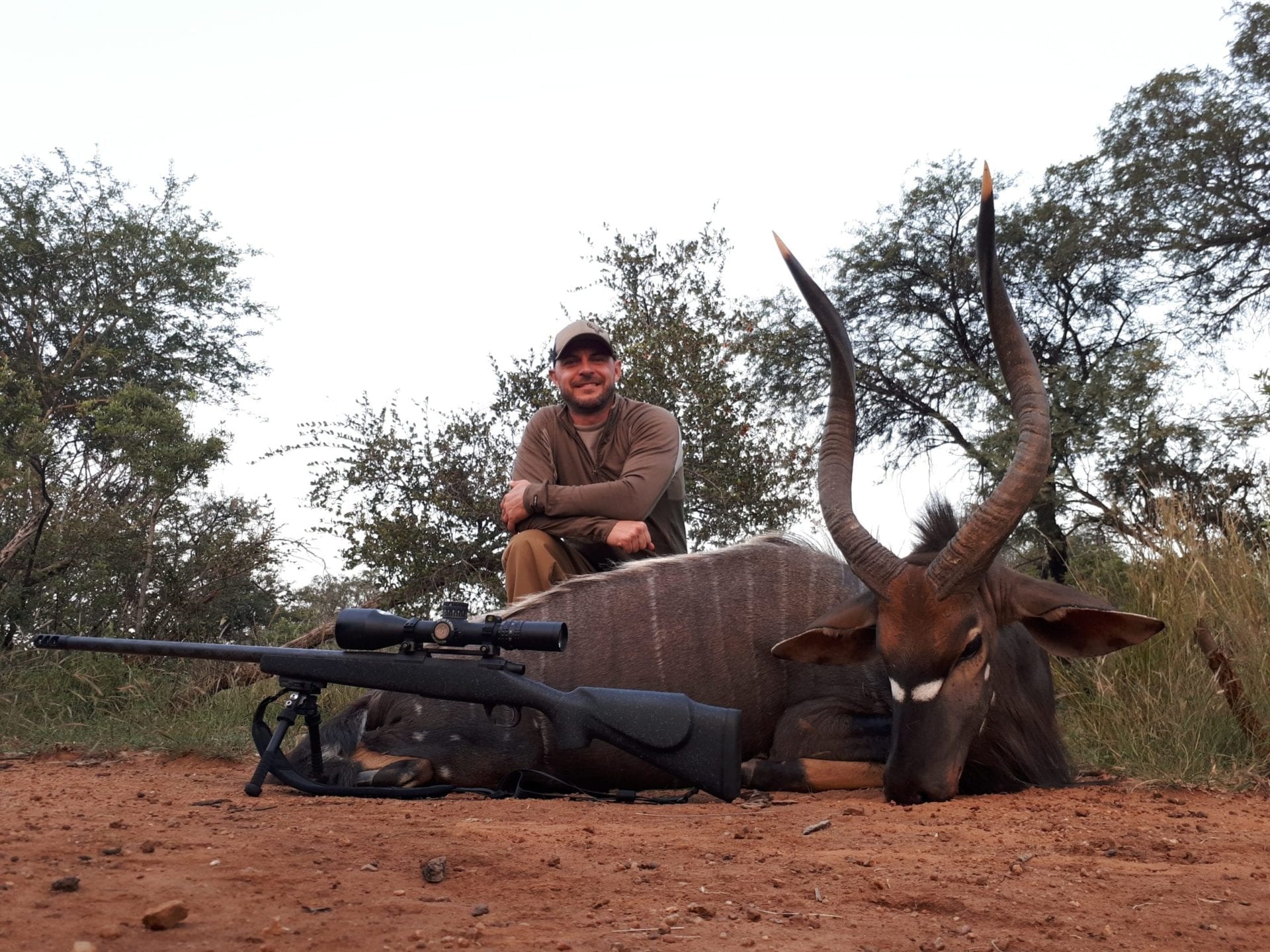
Nyala
Nyala is a spiral horned antelope of medium size that is situated between its close relatives, the Bushbuck and the Kudu. Two species of Nyala are known to exist: the Mountain Nyala, which is considerably larger and can be hunted in the Ethiopian Highlands, and the Lowland Nyala, which is commonly referred to as just the Nyala. Historically, Nyala was found in Southern East Africa, but presently, this splendid antelope can be hunted in Mozambique, South Africa, Swaziland, and Zimbabwe. Furthermore, it has been introduced to hunting concessions in Namibia and Botswana.
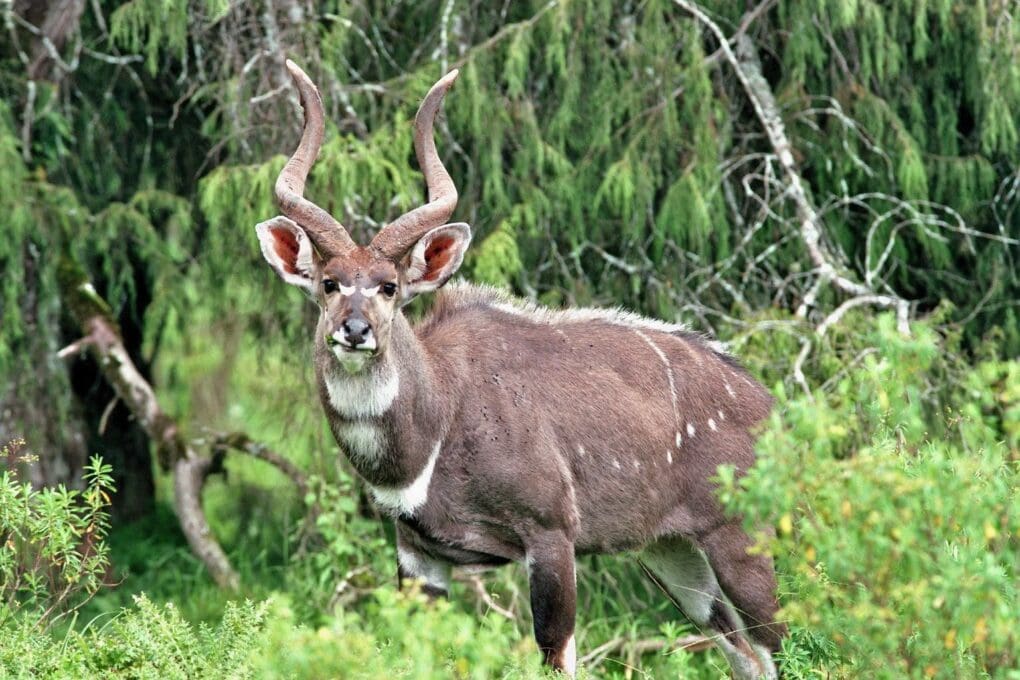
Mountain Nyala
The mountain Nyala or balbok is an antelope found in high altitude woodland in a small part of central Ethiopia. Mountain Nyala were named for their similarity to the Common Nyala but they are now considered closer relatives of the kudu because of their size.
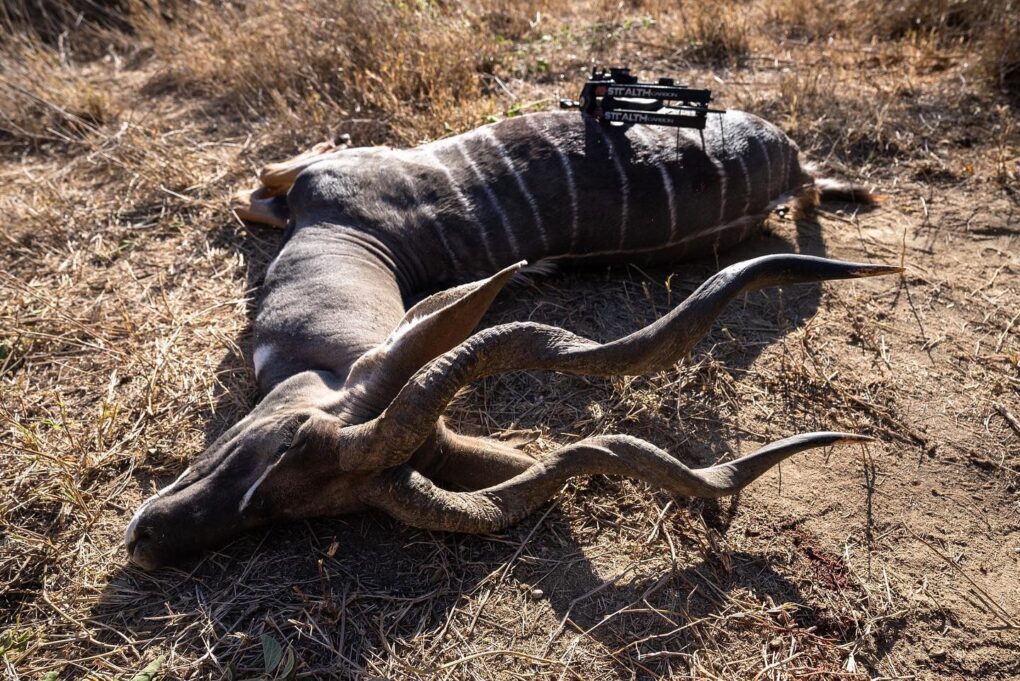
Lesser Kudu
One of the most expensive African antelope hunts, the Lesser Kudu is a creature that favors uneven, sylvan landscapes with short plant life. Its native habitat once spanned across the East African region, encompassing Somalia, Ethiopia, Southern Sudan, Uganda, Kenya, and Tanzania. Nevertheless, owing to political instability in some areas, and the discontinuation of big-game hunting in others, the pursuit of Lesser Kudu can only be performed in Tanzania.

Greater Kudu
Hunting the kudu occupies a preeminent place on the agenda of almost every hunter who journeys to Africa. It is arguably the second most desirable prize for hunters in Africa’s grasslands after the impala. The kudu is a large species of antelope with a dignified demeanor. Its appearance is strikingly alluring, with lengthy, corkscrew-shaped horns that distinguish it from other members of the antelope family. Dubbed the “gray ghost,” it features a pale gray to brownish-gray coat adorned with white vertical stripes along its flank. Males possess a notable white chevron marking between their eyes, which accentuates the lengthy, spiral horns borne only by bulls. Kudu cows are quite similar in appearance to males, and while they lack horns, their ears are strikingly prominent and appealing. Both sexes display white coloring beneath their tails and bear a conspicuous hump on their shoulders. The most successful kudu hunts occur in the bushveld, where there is an abundance of foliage, fresh shoots, seedpods, and fresh grass.
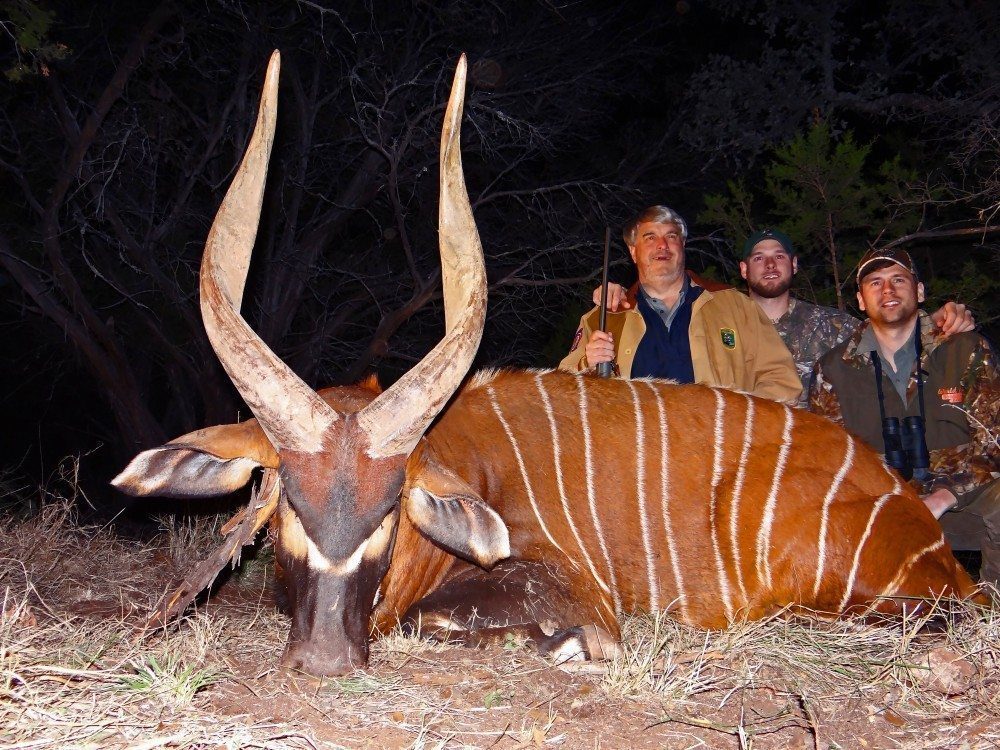
Bongo
Bongos are a scarce game animal that roams the African rainforests and are closely related to the Kudu, Nyala, Bushbuck, and swamp-dwelling Sitatunga. The Western or Lowland Bongo, which can be hunted in Cameroon, Central African Republic, and the Republic of Congo, and the Eastern or Mountain Bongo, found in the forested mountains of Kenya, are divided into two groups based on hunting records. However, hunting the Mountain Bongo is strictly prohibited.
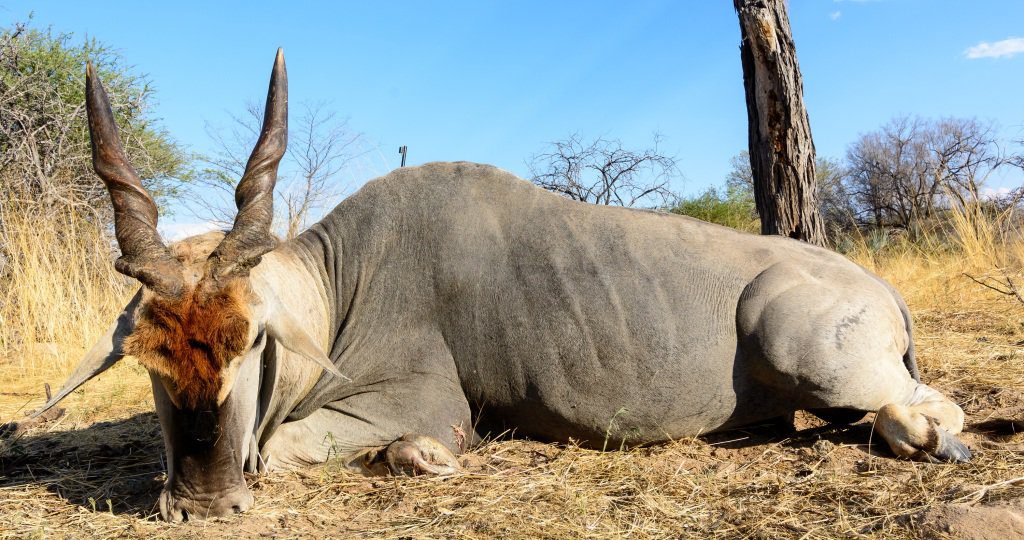
Common Eland
The eland is the largest antelope found in southern Africa, with a weight that can exceed 2,000 pounds. As the largest spiral-horned antelope, this ox-like bovid develops the distinct features of a Brahma bull such as a thick neck, hump, and dewlap. Its coloration is grayish-brown, and older males develop a bluish-gray hue around their neck. Certain specimens display faint vertical stripes down their flanks. Both the male and female carry horns, with the bull’s horns being shorter but heavier. The eland is often found in groups of 8 to 12 individuals, although large herds are not uncommon. It prefers open woodlands and scrubby flat velds where it grazes during the day.
Despite its large size, the eland is an impressive jumper, effortlessly clearing obstacles over 6 or 7 feet high. Hunting the eland requires a high level of skill since it is prone to nervousness and will flee at the first sign of danger. The use of a suitable rifle is of utmost importance in hunting eland. Although many hunters use smaller calibers, the .375 rifle is recommended to ensure a well-placed shot. Even with a lesser caliber, a shot that is off by a few inches could result in a long day of tracking or the loss of a wounded animal.
A quick pointing double rifle is ideal for hunting eland, especially if you have one available. The 9.3 X 74R is an excellent choice, as is the previously mentioned .375 H&H with 286 grain or 300 grain bullets. Using solid bullets for backup shots is recommended since this large animal is difficult to bring down. Hunting eland is usually done by chance encounter while hunting other game. However, hunting trophy bulls can be extremely challenging since they are difficult to approach within shooting range. One will likely need to walk and stalk for a considerable distance, with most specimens taken at close range in heavy cover.
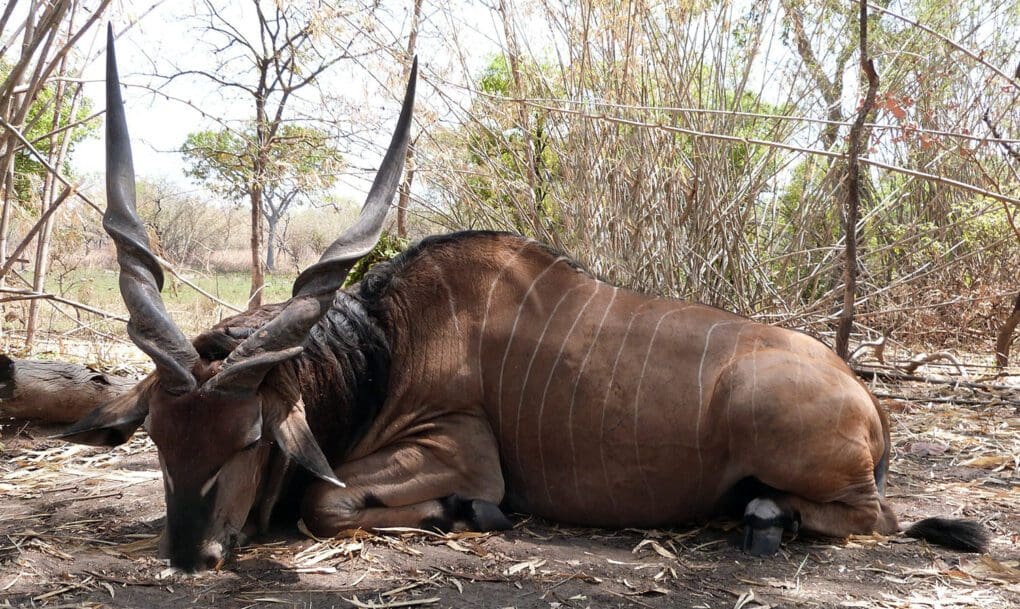
Lord Derby or Giant Eland
The Eland, which used to inhabit a wide range of regions including Southern Sudan, Central and East Africa, and Angola in the west, all the way down to Southern Africa, is now only available for hunting in specialized hunts in Cameroon and the Central African Republic. The Lord Derby Eland, which is the largest of all Elands and is also known as the Giant Eland, is a particularly impressive species. It far surpasses the Cape and Livingstone Eland in size.
Hunting this giant, spiral-horned antelope requires significant time and dedication, so the minimum hunting period is 10 to 15 days. The outfitters who operate in countries with very little infrastructure face difficult and expensive operating conditions, but this creates good wild free-range hunting conditions. In Cameroon, a 10-15 day Lord Derby Eland hunt with trophy fee included can cost between ,000 and ,000, excluding any extras.
Live Like You Mean It
Contact Us
We've helped thousands of OI clients plan their adventures
Our team of professional consultants are ready to help you research, book and plan an amazing trip with one of our amazing outfitter partners around the world.
I didn't think an experience like this was possible.
This trip, was, for me at least not just a trip, for me it was a real adventure, a real experience. I love the wilderness and this trip afforded me the opportunity to connect with the Alaskan wilderness in ways very few people do. It was an experience I will never forgot in a place I can’t wait to get back to.Oliver Fischer
The outfitter handled everything perfectly.
We were thankful that Outdoors International hooked us up with a great outfitter because they were able to find us an acceptable alternate on short notice. Overall the two year process to get this float in was seamless and worry free. Just like it should be.Thank you, Stan Masneri
What an amazing experience!
The lodge was out of this world! Our rooms, the delicious food, the incredible wildlife and the scenery were amazing. Our photo safari guide was truly exceptional and had us on animals almost constantly. We saw over 30 different species and had some incredible up close experiences. Africa is amazing!Scott Navares
Copyright 2005-2025 © Outdoors International™ · All Rights Reserved.
